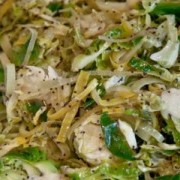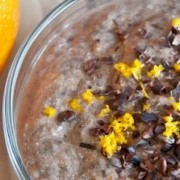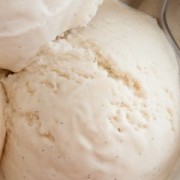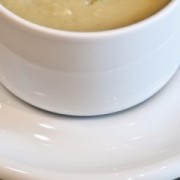So Many Veggies and Protein That You Are Too Full for Starches and Sweets
This part one of a multi-part series started here.
If it is a non-starchy vegetable, overeat it. I am talking ten or more servings of non-starchy vegetables per day.
“Cutting back on carbohydrates and replacing those calories with protein lowers the levels of triglycerides that increase the risk of heart disease and also boosts HDL, the protective form of cholesterol.” – Dr. W.C. Willett, Harvard University
While it is absolutely not required, eating ten or more servings of non-starchy vegetables per day is dramatically easier if you use a blender to make vegetable and fruit smoothies (recipes, recommended blender). Don’t use a juicer. It removes filling fiber and healthy nutrients. Use a blender and mix a lot of any green vegetable with a little bit of strawberries or oranges. Add some vanilla-flavored whey protein powder, cinnamon, and vanilla extract, and the smoothie is quite tasty.
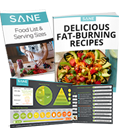
If fresh non-starchy vegetables are not available, frozen ones are fine. Wheat grass and other powdered green “super foods” are convenient but taste bad.
Avoid canned vegetables and canned fruits if at all possible. Focus on fresh or frozen, deeply colored, non-starchy vegetables that grow above ground. When it comes to fruits, focus on berries and citrus. They are the most SANE options.
When it comes to protein, divide your protein intake into evenly throughout the day (What about intermittent fasting?). Fortunately, this is easy. Here is one way to do it.
- Step 1. Add eight egg whites to breakfast (Why egg whites?). Scramble them. Microwave them. Whatever. This shot of pure protein jump starts your fat metabolism system and sets you up to burn body fat all day. A whey protein shake also works. Make sure the shake has less than ten grams of sugar in it, and at least thirty grams of protein in it. Prep time: five minutes.
- Step 2: Drink a SANE and scrumptious protein and veggie shake between breakfast and lunch. Same sugar and protein recommendation as above. Prep time: five minutes.
- Step 3: Eat a double portion of protein along with a triple serving of non-starchy vegetables for lunch. Prep time: no additional time. You have to do something for lunch anyway.
- Step 4: Drink another SANE and scrumptious protein and veggie shake between lunch and dinner. Same sugar and protein recommendation as above. Prep time: five minutes.
- Step 5: Eat a double portion of protein along with a triple serving of non-starchy vegetables for dinner. Prep time: no additional time. You have to do something for dinner anyway.
|
Total Prep Time = Fifteen minutes |
Total Positive Impact = Dramatic |
If you enjoy the convenience of protein powders I’ve recommended a couple good options here. Other inexpensive and convenient forms of protein are canned tuna, canned salmon, egg whites, frozen salmon burgers, frozen turkey burgers, fat-free or low-fat cottage cheese, fat-free or low-fat plain Greek yogurt (Why low-fat?), and canned chicken (Going SANE on a budget). When it comes to seafood and meat, canned is fine. I am not a fan of what canning does to the taste of the food, but it is less expensive and more convenient.
“Diets with increased protein have now been shown to improve adult health with benefits for treatment or prevention of obesity, osteoporosis, type 2 diabetes, Metabolic Syndrome, heart disease.” – Dr. D.K. Layman, University of Illinois
Putting these recommendations all together, the first step to eating more—smarter—is as simple as doubling the amount of seafood, nutritious meat, eggs or egg whites (depending on your goals), fat-free or low-fat cottage cheese, or fat-free or low-fat plain Greek yogurt, and tripling the amount of non-starchy vegetables that you would typically eat at each meal. This guarantees you will be too full for starch or sweets while never leaving the table feeling deprived.
When eating a double serving of protein and a triple serving of non-starchy vegetables is not practical, mix a scoop or two of protein powder and some milled flax seeds or chia seeds with water and drink it before the meal. Blend it with some ice if it is convenient.
Of course nobody can to do this all the time, but the more non-starchy vegetables and protein that you eat in place of starches and sweets, the healthier you will be and the more body fat you will burn.



